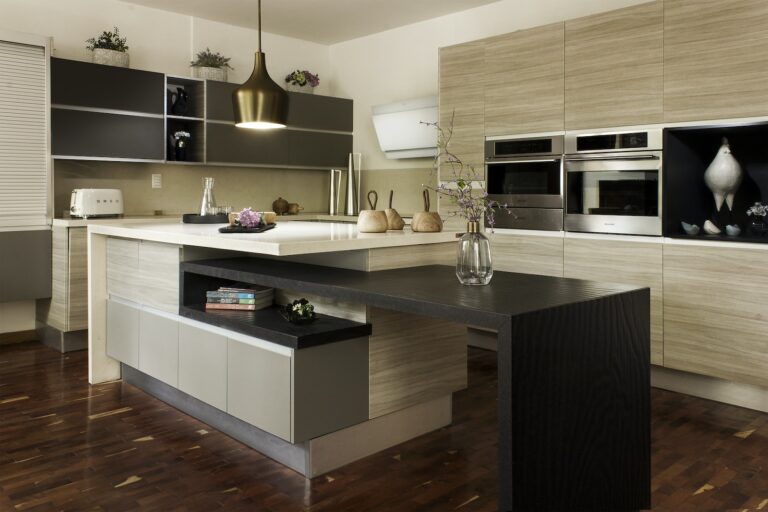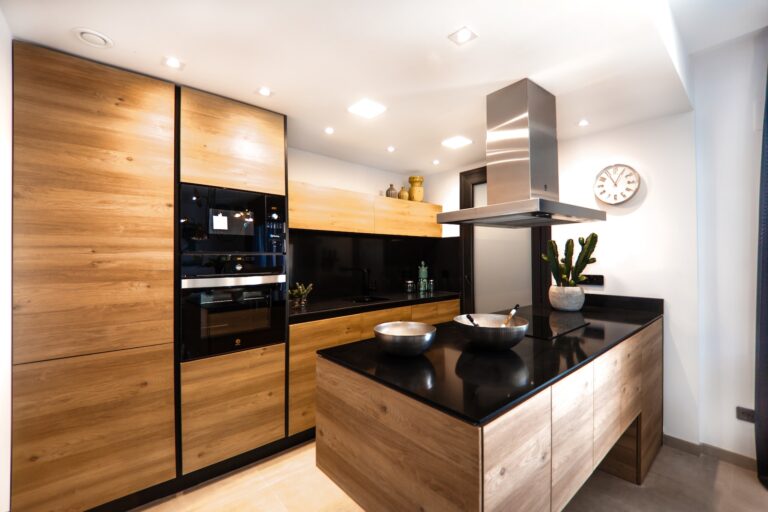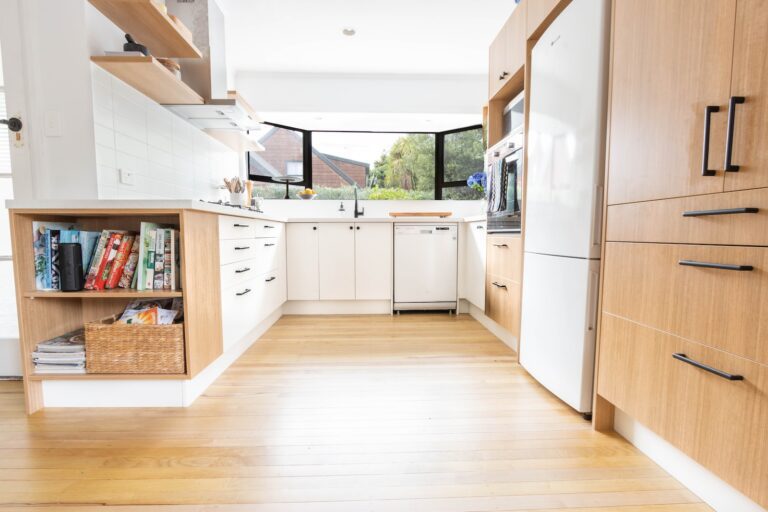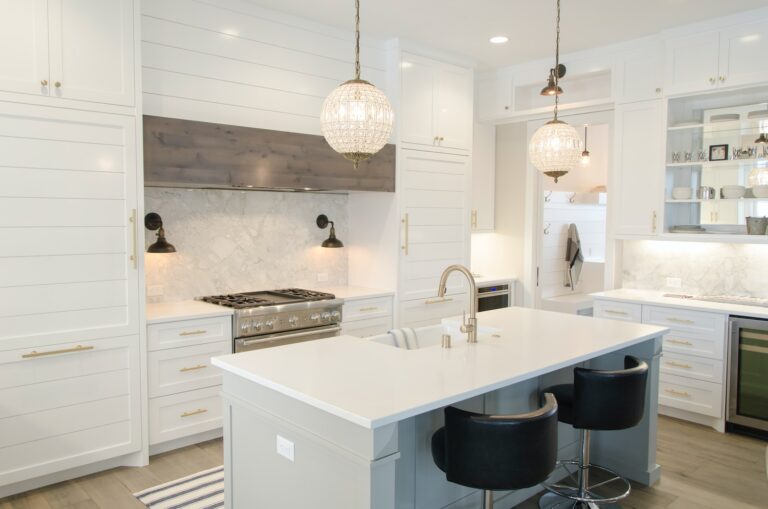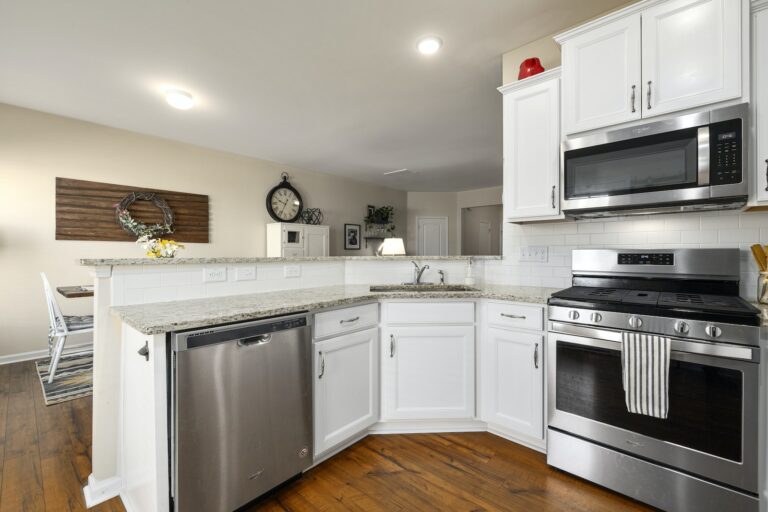How To Plan Out Kitchen Cabinet Layout?
A kitchen is the heart of any home where we spend most of our time cooking and preparing meals. And when it comes to kitchen design, the layout of kitchen cabinets plays a crucial role in functionality and aesthetics. Planning out a kitchen cabinet layout may seem like a daunting task, but with the right tips and tricks, you can create a functional and stylish kitchen that suits your needs. In this article, we’ll discuss how to plan out a kitchen cabinet layout and make the most of your kitchen space.
- Assess your storage needs and prioritize accordingly.
- Consider the work triangle and ensure your cabinets are placed strategically.
- Choose cabinet types, such as base, wall, or corner cabinets.
- Decide on the cabinet finishes and hardware that complement your overall kitchen design.
- Consult with a professional or use a kitchen design tool to ensure accurate measurements and placement.
By following these steps, you can create a kitchen cabinet layout that is both functional and visually appealing.

How To Plan Out Kitchen Cabinet Layout?
Planning out your kitchen cabinet layout can be a daunting task, especially if you’re not familiar with the process. However, with the right tools and knowledge, you can create a functional and aesthetically pleasing kitchen that meets your needs and fits your style. In this article, we’ll guide you through the process of planning out your kitchen cabinet layout in 10 easy steps.
Step 1: Take Accurate Measurements
The first step in planning out your kitchen cabinet layout is to take accurate measurements of your kitchen. This includes measuring the length, width, and height of the room, as well as any obstacles such as windows, doors, and electrical outlets. Once you have these measurements, you can create a rough sketch of your kitchen to help you visualize the space.
It’s important to take accurate measurements to ensure that your cabinets fit properly and that you don’t waste any space. You can use a tape measure, laser measure, or even a smartphone app to take your measurements.
Step 2: Determine Your Needs
The next step is to determine your needs. This includes considering your storage needs, cooking habits, and overall kitchen style. Do you need a lot of storage space? Do you cook frequently and need easy access to your cooking tools? What style do you want your kitchen to be?
Answering these questions will help you determine the type of cabinets you need, as well as their layout and placement. For example, if you need a lot of storage space, you may want to consider adding a pantry cabinet or a pull-out drawer system.
Step 3: Choose Your Cabinet Style
Once you’ve determined your needs, it’s time to choose your cabinet style. There are many different styles of kitchen cabinets to choose from, including traditional, modern, and transitional. Your cabinet style should complement the overall style of your kitchen and fit your personal taste.
You can choose from a variety of materials, such as wood, laminate, or metal. Each material has its own unique features and benefits, so it’s important to do your research and choose the one that best fits your needs.
Step 4: Create a Rough Sketch
Now that you have your measurements, needs, and style in mind, it’s time to create a rough sketch of your kitchen cabinet layout. This sketch should include the placement of your cabinets, appliances, and other kitchen features.
You can use a pencil and paper or a software program to create your sketch. This will help you visualize the layout and make any necessary adjustments before you start installing your cabinets.
Step 5: Determine Your Cabinet Configuration
The next step is to determine your cabinet configuration. This includes the placement and size of your cabinets, as well as any special features such as pull-out drawers or lazy susans.
You can choose from a variety of configurations, such as a U-shape, L-shape, or galley kitchen. The configuration you choose will depend on your needs and the size and shape of your kitchen.
Step 6: Plan Your Cabinet Heights
Once you’ve determined your cabinet configuration, it’s time to plan your cabinet heights. This includes the height of your base cabinets, wall cabinets, and any other special cabinets such as a pantry or broom closet.
It’s important to consider your own height and reach when planning your cabinet heights. You want to make sure that your cabinets are comfortable to use and that you can easily reach everything you need.
Step 7: Choose Your Cabinet Accessories
The next step is to choose your cabinet accessories. This includes things like drawer dividers, pull-out shelves, and spice racks. These accessories can help you maximize your storage space and keep your kitchen organized.
Consider your cooking habits and the types of items you’ll be storing in your cabinets when choosing your accessories. For example, if you cook frequently, you may want to add a pull-out cutting board or a built-in knife block.
Step 8: Plan Your Lighting
Lighting is an important aspect of any kitchen cabinet layout. It can help you see what you’re doing while cooking and can also add to the overall ambiance of your kitchen.
Plan your lighting by considering the placement of your cabinets and appliances. You may want to add under-cabinet lighting to illuminate your work surfaces or pendant lights above your island for a stylish touch.
Step 9: Consider Your Budget
As you plan out your kitchen cabinet layout, it’s important to consider your budget. Kitchen cabinets can be a significant investment, so it’s important to choose the ones that fit your needs and your wallet.
Consider the materials you choose, as well as any special features or accessories. You may be able to save money by choosing a less expensive material or by forgoing some of the special features.
Step 10: Hire a Professional
If you’re not comfortable planning out your kitchen cabinet layout on your own, you may want to consider hiring a professional. A professional can help you design a functional and beautiful kitchen that meets your needs and fits your style.
Consider hiring a professional if you’re not familiar with the process, if you have a complex kitchen layout, or if you want to ensure that your cabinets are installed correctly.
In conclusion, planning out your kitchen cabinet layout is an important step in creating a functional and beautiful kitchen. By taking accurate measurements, determining your needs and style, and following these 10 easy steps, you can create a kitchen that meets your needs and fits your personal taste.
Frequently Asked Questions
What are the key factors to consider when planning a kitchen cabinet layout?
When planning a kitchen cabinet layout, it’s important to consider the size and shape of your kitchen, your storage needs, and the style you want to achieve. You should also take into account the appliances you’ll be using and the amount of counter space you’ll need for food prep and cooking.
In addition, it’s important to think about the flow of your kitchen and how you’ll be using the space. For example, if you entertain frequently, you may want to incorporate a bar area or a large island where guests can gather while you’re cooking.
How do I determine the best layout for my kitchen cabinets?
To determine the best layout for your kitchen cabinets, start by measuring your kitchen and making note of any existing features, such as windows, doors, and electrical outlets. Next, consider your storage needs and the types of cabinets you’ll need, such as base cabinets, wall cabinets, and pantry cabinets.
Once you have a good idea of your storage needs, you can start to think about the layout of your cabinets. Some popular layouts include U-shaped, L-shaped, and galley kitchens. Be sure to consider the flow of your kitchen and how you’ll be using the space when deciding on a layout.
What are some popular kitchen cabinet styles?
There are many different kitchen cabinet styles to choose from, ranging from traditional to modern. Some popular styles include shaker, flat-panel, raised-panel, and beadboard. Shaker cabinets are a classic style that features a simple, clean design, while flat-panel cabinets are more modern and have a sleek, minimalist look.
Raised-panel cabinets have a more decorative look and often feature intricate detailing, while beadboard cabinets have a charming, cottage-style look. When choosing a style, be sure to consider the overall design of your kitchen and the look you want to achieve.
What materials are best for kitchen cabinets?
When it comes to kitchen cabinet materials, there are many options to choose from. Some popular choices include wood, laminate, and metal. Wood cabinets are a classic choice and come in a variety of finishes and styles, from traditional to modern.
Laminate cabinets are a more affordable option and are available in a wide range of colors and styles. Metal cabinets are a more modern choice and are often used in industrial-style kitchens. When choosing a material, consider your budget, the overall style of your kitchen, and the durability of the material.
What are some tips for maximizing storage in my kitchen cabinets?
To maximize storage in your kitchen cabinets, start by using all available space, including the backs of doors and the space above your cabinets. Install pull-out shelves and organizers to make it easier to access items in the back of your cabinets.
Use dividers and trays to keep items organized, and consider installing a lazy susan or a corner cabinet to make use of hard-to-reach corners. Finally, be sure to declutter your cabinets regularly to keep them organized and to make room for new items.
8 common kitchen layout mistakes AND how to avoid them
In conclusion, planning out your kitchen cabinet layout is a crucial step in creating a functional and efficient kitchen space. By considering your storage needs, the flow of your kitchen, and the overall design aesthetic, you can create a layout that works best for you and your family.
Remember to take accurate measurements, consider your budget, and choose quality materials that will last. Don’t shy away from seeking professional help if you need it, as a kitchen designer or contractor can offer valuable advice and recommendations.
With careful planning and thoughtful consideration, you can create a beautiful and functional kitchen that will serve you for years to come. So go ahead and start planning your dream kitchen today!

